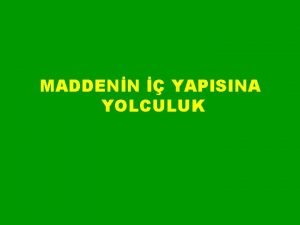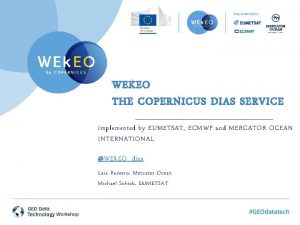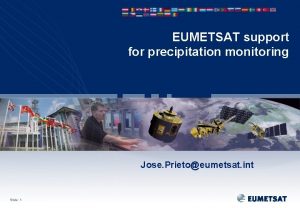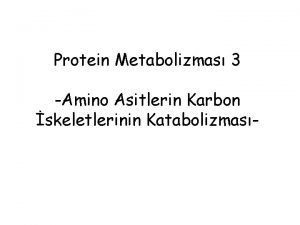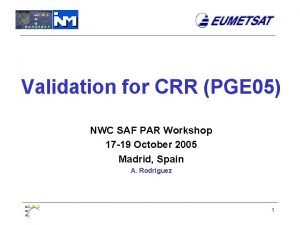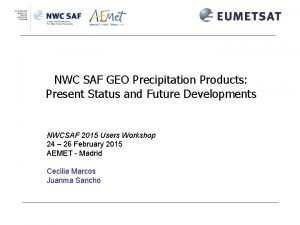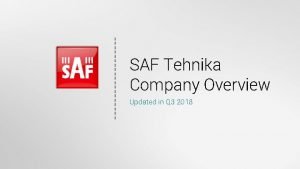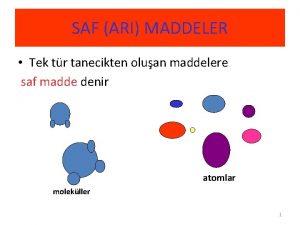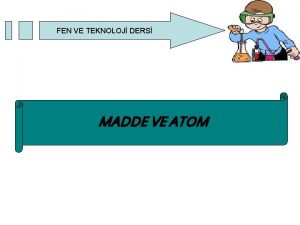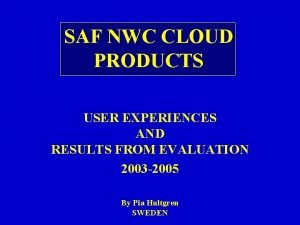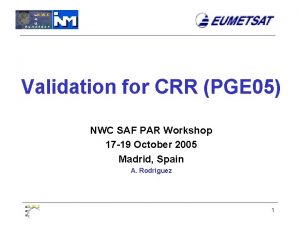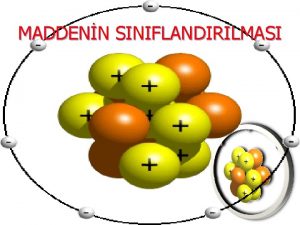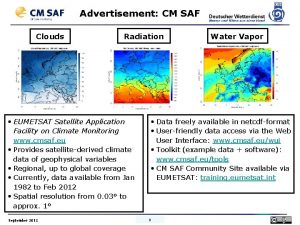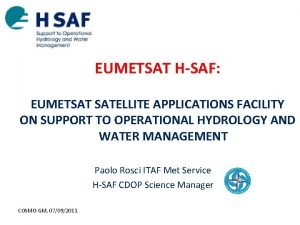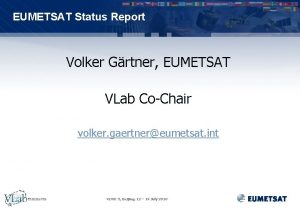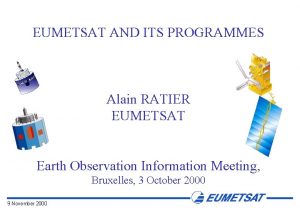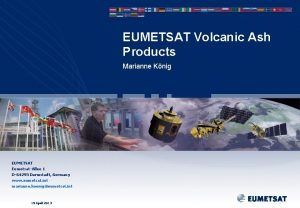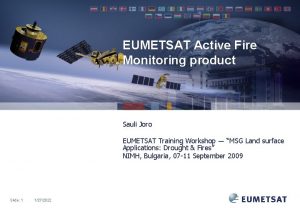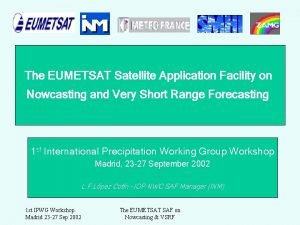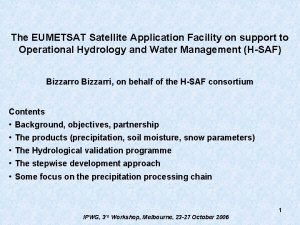Advertisement CM SAF Clouds Radiation EUMETSAT Satellite Application



















- Slides: 19

Advertisement: CM SAF Clouds Radiation • EUMETSAT Satellite Application Facility on Climate Monitoring www. cmsaf. eu • Provides satellite-derived climate data of geophysical variables • Regional, up to global coverage • Currently, data available from Jan 1982 to Mar 2013 • Spatial resolution from 0. 03° to approx. 1° April 2013 Water Vapor • Data freely available in netcdf-format • User-friendly data access via the Web User Interface: www. cmsaf. eu/wui • Toolkit (example data + software): www. cmsaf. eu/tools • CM SAF Community Site available via EUMETSAT: training. eumetsat. int 1

Regional Trends in Surface Solar Radiation derived from satellitebased data sets Jörg Trentmann 1, A. Sanchez-Lorenzo 2, 3, R. Posselt 4, S. Krähenmann 5, R. W. Müller 1, M. Wild 2, R. Stöckli 4, B. Ahrens 5 1 Deutscher Wetterdienst, EUMETSAT Satellite Application Facility on Climate Monitoring (CM SAF), 2 Eidgenössische Technische Hochschule (ETH), Zürich, 3 Department of Physics, University of Girona, Spain, 4 Federal Office of Climatology and Meteorology, Meteo. Swiss, Zurich, Switzerland, 5 Institute for Atmospheric and Environmental Sciences, University of Frankfurt, Germany April 2013 2

Motivation • Surface solar radiation has changed over the last decades • Most studies rely on surface observations, e. g. , from networks like BSRN, GEBA. • Surface stations provide only limited spatial coverage, e. g. , land only ØSpatial information on temporal changes of surface radiation can be provided by high-quality gridded data set, e. g. , from satellite observations. April 2013 3

Data Sets: Meteosat Surface Radiation CM SAF Meteosat (Posselt et al. , 2012) • 1983 – 2005; 0. 03 deg; Meteosat Full Disk, monthly/daily/hourly • 6 different MVIRI satellite instruments (of the same type) used! Meteosat Surface Radiation • 1983 to 2010! • 8 different satellite instruments Meteo. Swiss SEVIRI (Posselt et al. , 2013) • 2004 – 2010; 0. 03 deg; Meteosat Full Disk, monthly/daily • 2 different SEVIRI satellite instruments (of the same type) used! • more details: talk by Rebekka Posselt + April 2013 = 4

Data Sets: CLARA CM SAF CLARA • CM SAF Clouds, Albedo, Radiation (Karlsson et al. , 2013) • 1982 – 2009; 0. 25 deg; global coverage, monthly/daily • 11 different AVHRR satellite instruments used! Both data sets (and many more!) are freely available from the EUMETSAT Satellite Application Facility on Climate Monitoring (CM SAF) at www. cmsaf. eu. Satellite Coverage April 2013 5

Reference Data: GEBA: • Global Energy Balance Archive, hosted at ETH Zürich • > 200 surface stations globally • starting 1930 s • Here: ca. 47 homogenized European stations available from 1983 to 2007 • more details: Poster by Arturo Sanchez-Lorenzo April 2013 6

Data Set Validation Comparing satellite-derived data sets with GEBA, monthly mean • Absolute bias below 10 W/m 2, anomaly correlation nearly 0. 9 We are interested in temporal changes, so lets have a look at the temporal evolution…. April 2013 7

Data Set Validation Temporal Evolution of absolute difference (1982 – 2007) • Annual cycle of absolute difference (MAD) • Characteristics of difference change over time Meteosat CLARA April 2013 8

Homogeneity Tests Standard Normal Homogeneity Test (SNHT) Penalized Maximum T test (PMT) • Detects changes of the mean • Fits a model assuming constant values and (multi) shifts : standardized mean of the first k months : standardized mean of the last (n-k)-months Alexandersson, 1986 April 2013 Wang et al. , 2008 9

Validation, Homogeneity Meteosat SNHT test statistic: Normalized Bias to GEBA 1994 1987 • 2 shifts detected: 1987 + 1994 (both can be attributed to instrumental changes) April 2013 10

Validation, Homogeneity Meteosat PMT test result Normalized Bias to GEBA • PMT detects shift in Feb 1994: Meteosat 5 became operational! April 2013 11

Validation, Homogeneity Meteosat Normalized Bias SNHT PMT test result 1994 1987 Data Set is homogeneous from 1995 to 2007! Artificial shifts in Meteosat Surface Radiation Data Set before 1994. April 2013 12

Validation, Homogeneity CLARA Normalized Bias PMT test result SNHT Both Data Sets are homogeneous after 1995! Satellite Coverage PMT detects shift in CLARA Surface Radiation data set in 1994. April 2013 13

Trends, 1995 to 2007 Significant brightening of 4. 5 W/m 2/dec (CLARA) to 5. 8 W/m 2/dec (Meteosat) from 1995 to 2007 in all data sets! April 2013 14

Trends, Germany N S • Tendency to more brightening in S-Germany in all data sets • Exception of GEBA data at Potsdam and Trier…. April 2013 15

Regional Trends, 1995 to 2010 Meteosat Average: 2. 2 W/m 2/dec April 2013 16

Regional Trends, 1995 to 2010 CLARA Average: 3. 7 W/m 2/dec April 2013 17

Regional Trends, 1995 to 2010 • Substantial spatial variability of the solar radiation trend (1995 to 2010), (mainly) consistent between the two (independent) satellitederived data sets • No direct effect of aerosol considered in the satellite retrieval, clouds dominate the trend • Most GEBA stations are located in ‘brightening regions’ April 2013 18

Conclusions • Satellite-derived Surface Radiation data sets (Meteosat, CLARA ) are homogeneous in Europe after 1995 • Mean trend in surface irradiance in Europe is reproduced by satellite-derived data sets • Brightening in Southern Germany has been larger than in Northern Germany • The trend in surface irradiance in Europe between 1995 and 2009/2010 is spatially inhomogeneous; GEBA stations are not ideally located • Outlook: ØEvaluate the homogeneity of the surface data using multiple gridded data sets ØImprove the satellite Data Sets to provide homogeneous data from 1983 to 2012 (data release in Summer 2014!) April 2013 19
